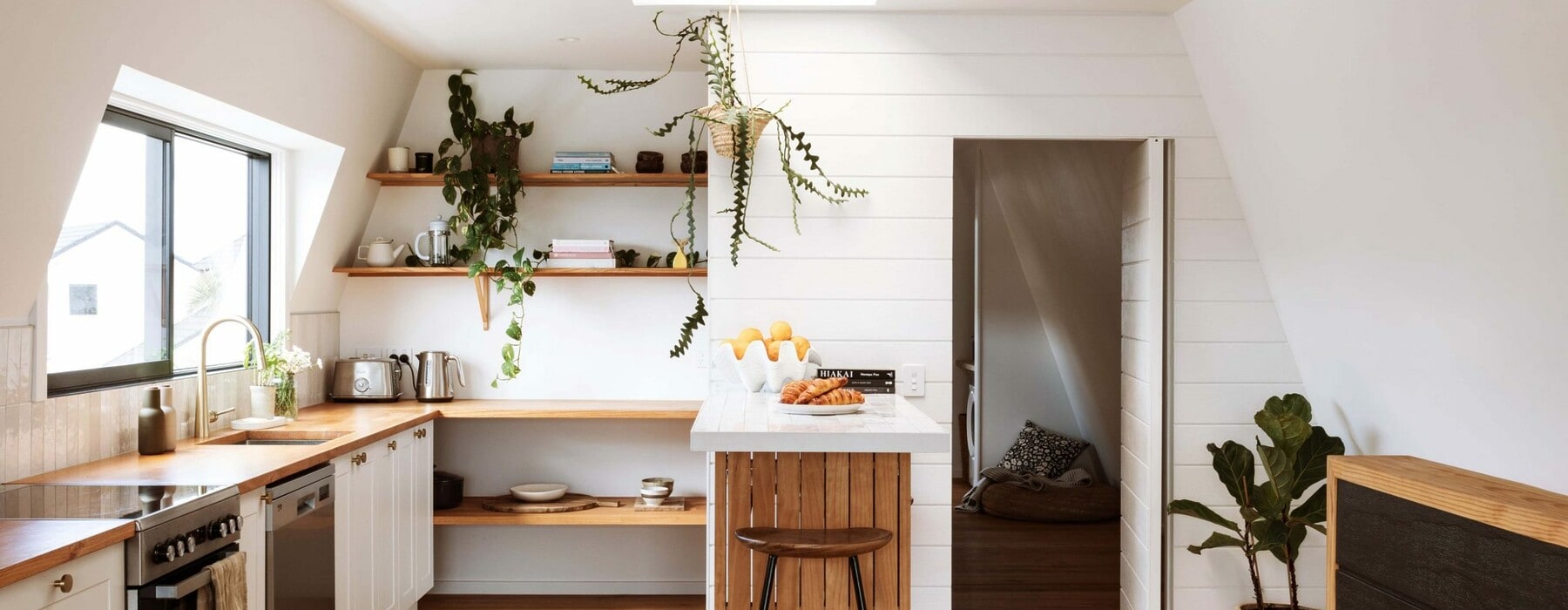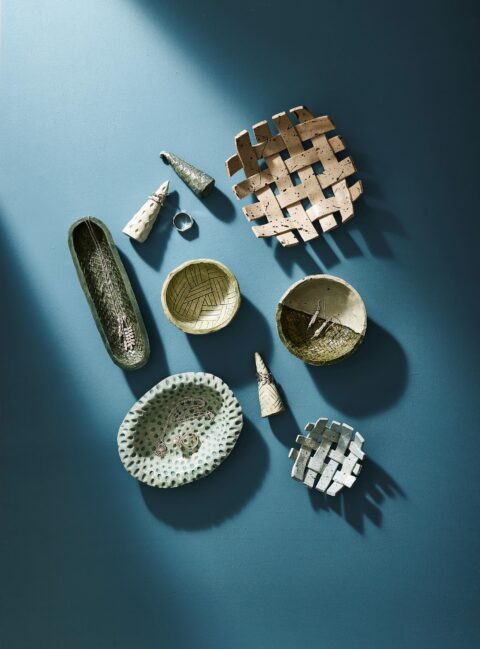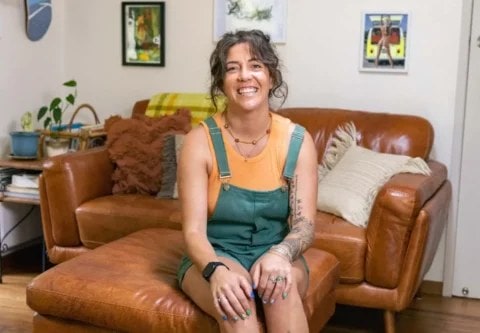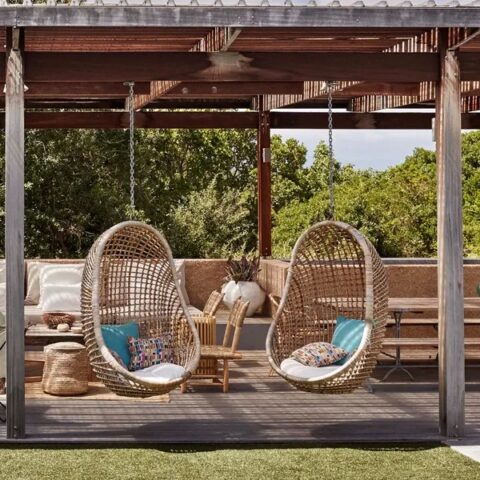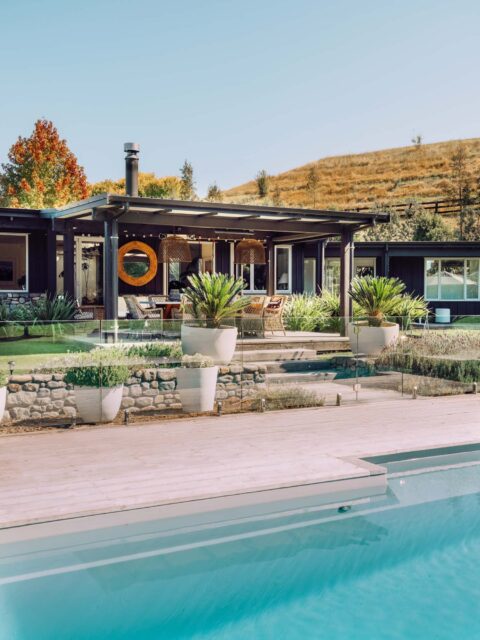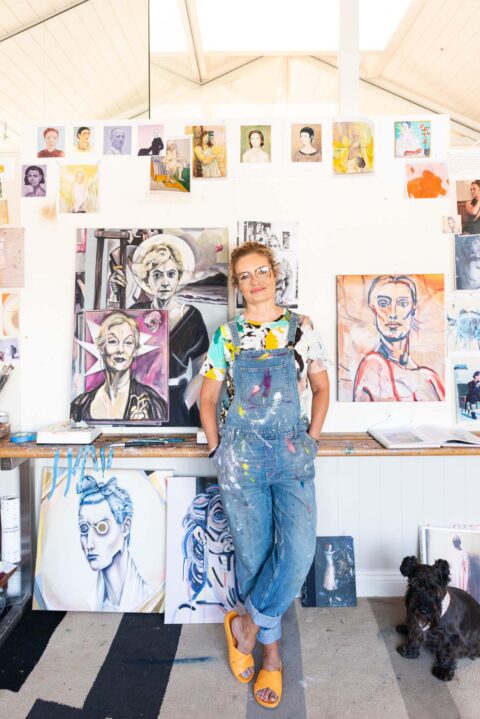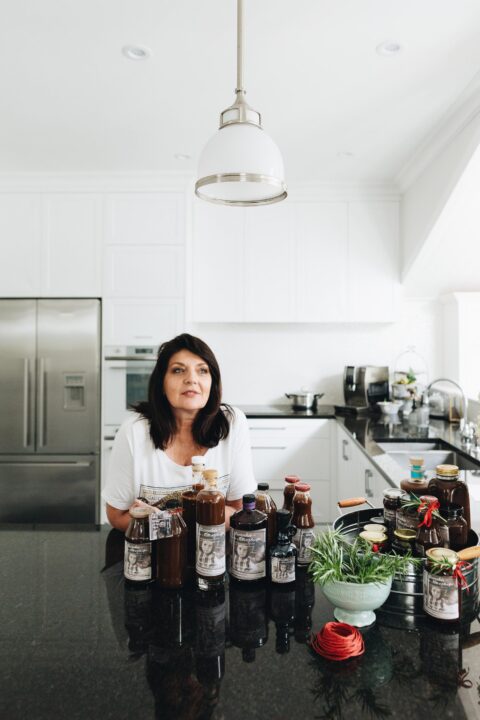A creative couple moved to Whangamatā for a slower pace of life and ended up transforming a run-down building into a sunny holiday apartment and stylish co-working space.
The space:
A three-storey 1980s building. On the top floor is Airbnb apartment Pop Top Whangamatā; on the middle floor is White Noise – a shared office space for small businesses, remote workers and freelancers who live, work or holiday in Whangamatā; and at street level is a dairy.
The renovators:
Husband and wife team Laura and Andrew Priestley.
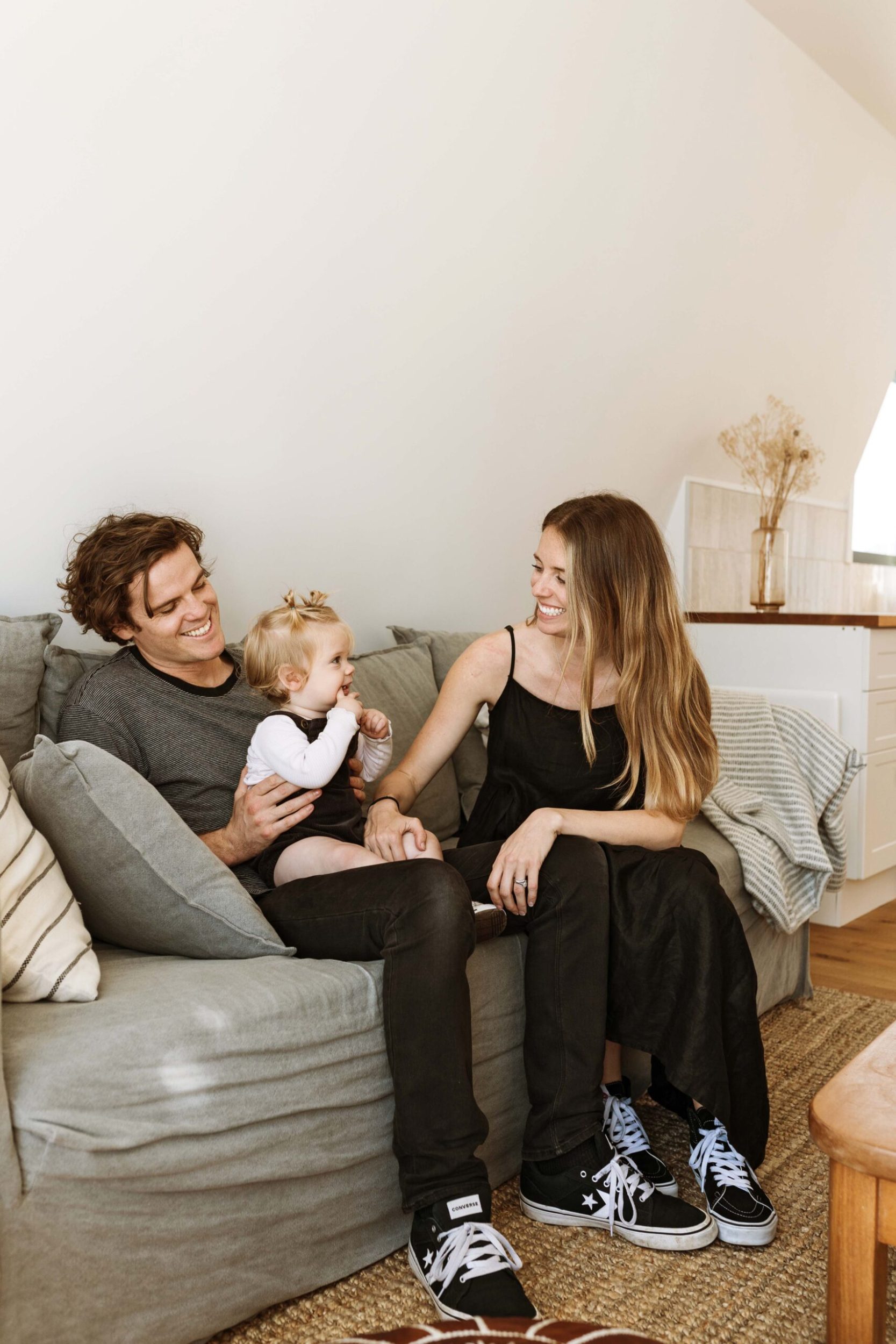
The location:
Whangamatā’s main street.
Why did you purchase this building?
“When we moved back to New Zealand after travelling, we wanted to escape city life,” Laura says. “Andrew’s family has a bach at Whangamatā, so it was an easy place for us to move to. We were looking at Waihi Beach but struggling to find something affordable, then this building caught the eye of Andrew and his dad. It was rundown but close to the beach, reasonably priced and had lots of potential. We bought it with Andrew’s parents, which made it more affordable.”
What was it like?
“It was a shambles. The bottom floor is a superette tenancy and the middle floor was storage and living quarters. The top floor was underutilised. It had a bed and a rug, and a horrible bathroom that was in the middle of where the hallway is now. The staircase was at the back and really pokey, and came out where the shower is now. But the amazing balcony sold it to us because you can see the Whangamatā Bar surf break and the hills that surround Whangamatā, and the main street. We took everything out and started from scratch.
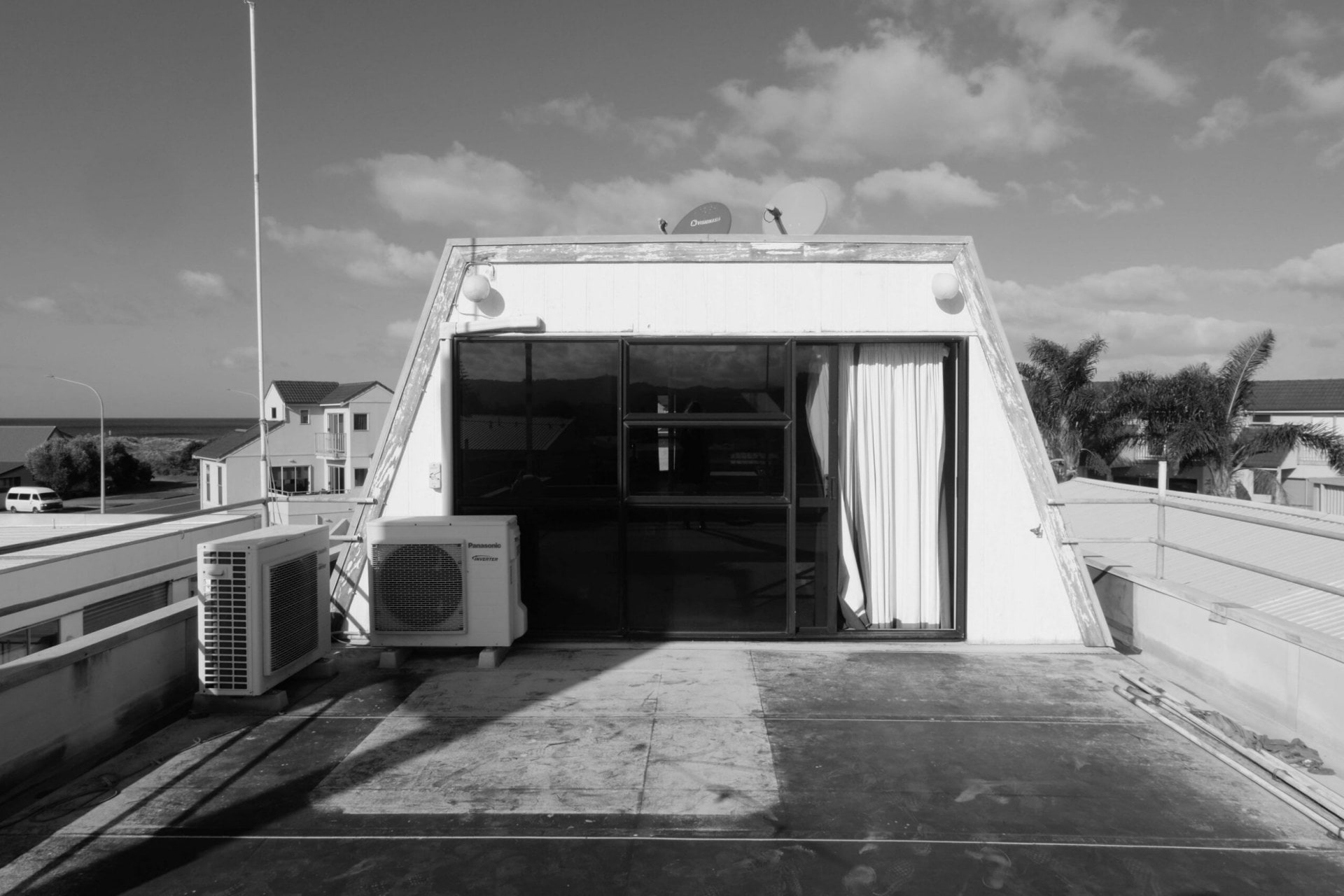
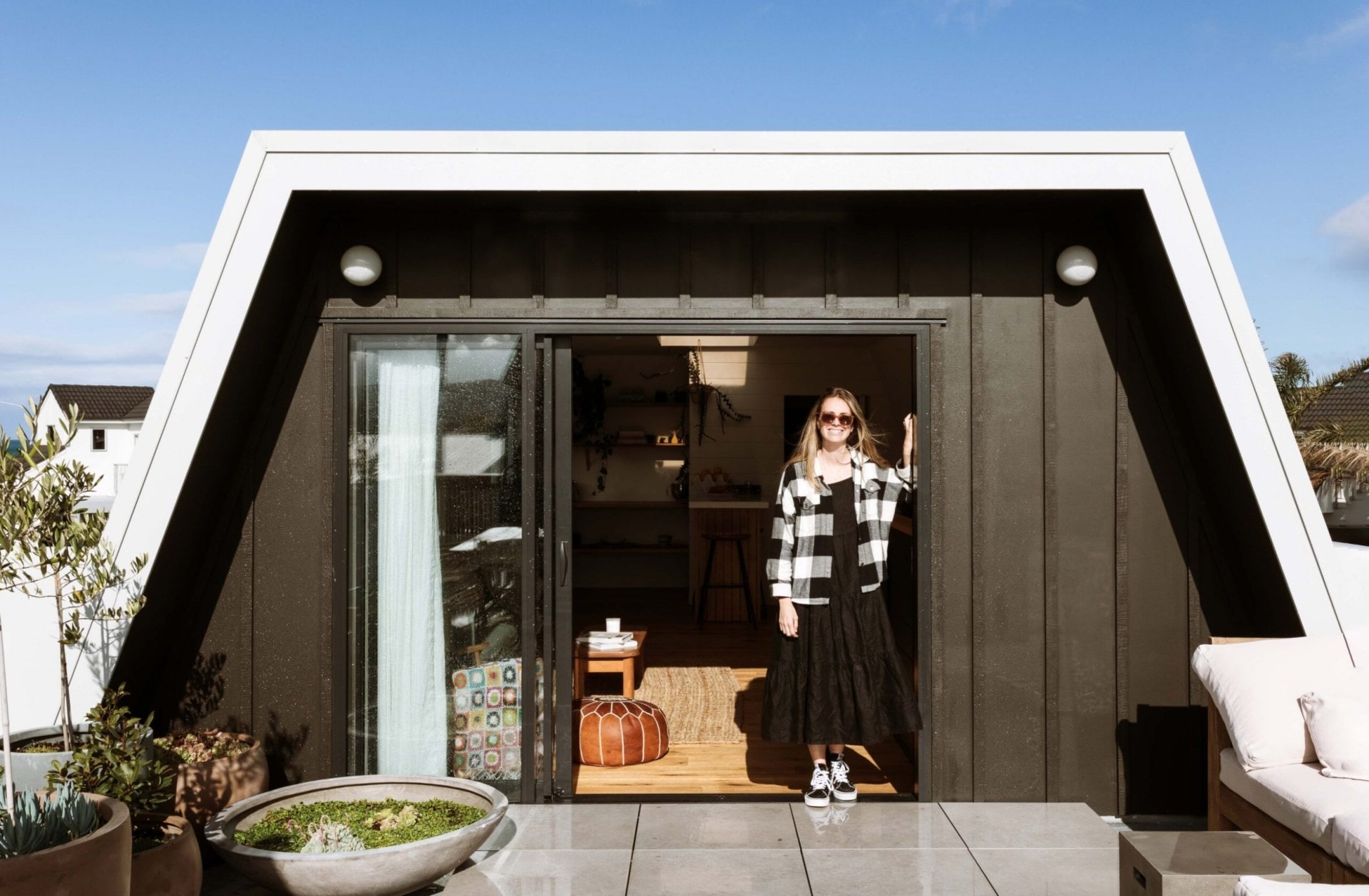
What was the timeline?
“We bought the building in February 2019 and started renovating six months later. We lived at Andrew’s parent’s bach while we were renovating, then moved in around August 2020 and did the finishing touches. The project was completed in October 2020.”
Who did the design?
“We did it ourselves. Andrew is a landscape architect, so not your typical architect, but he’s got a lot of good ideas and the right software programs to bring the vision to life.”
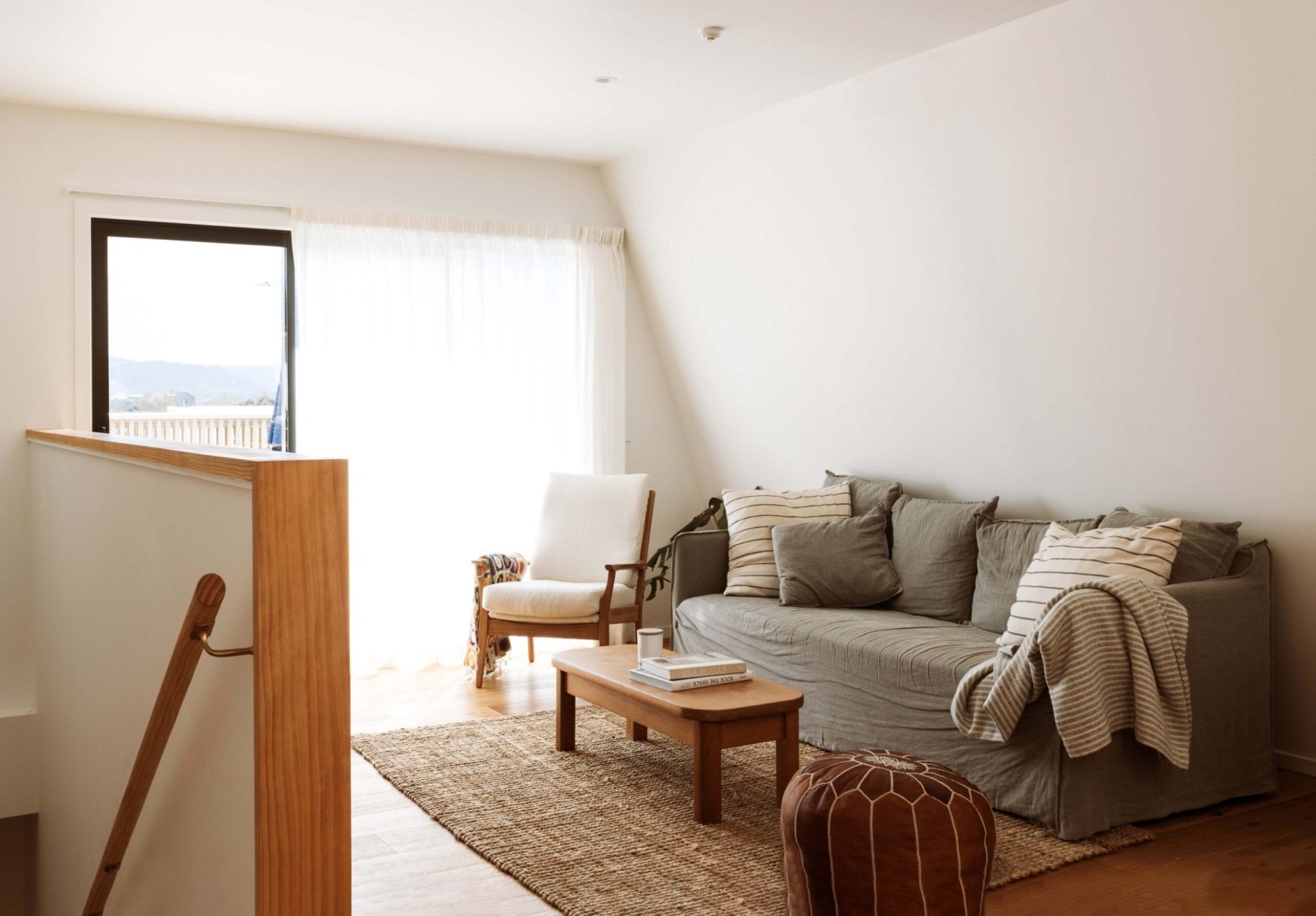
Did you do much of the building yourselves?
“It was an extensive renovation, and being a commercial property, it needed quite a bit of compliance to bring it up to standard, so there were a lot of tradespeople involved. But Andrew’s very handy, so he did all the detailing and finishing, like laying the floors and installing Shadowclad panels and outdoor tiles.”
Was this your first renovation?
“Yes. I suppose that’s why we did it – because we weren’t intimidated!”
How did you manage renovating two spaces at once?
“Andrew was the project manager, and then I stopped working in December 2019 and took on helping out with the project and getting the businesses established. It made sense to do it all at once because things like the fire systems applied to both the apartment and the office space. It was super hectic, but really fun doing two spaces that are quite different in terms of styling. The workspace is quite clean-cut, professional, minimal – just pendant lights and raw concrete – whereas the apartment’s more coastal, with beachy textures and linens.”
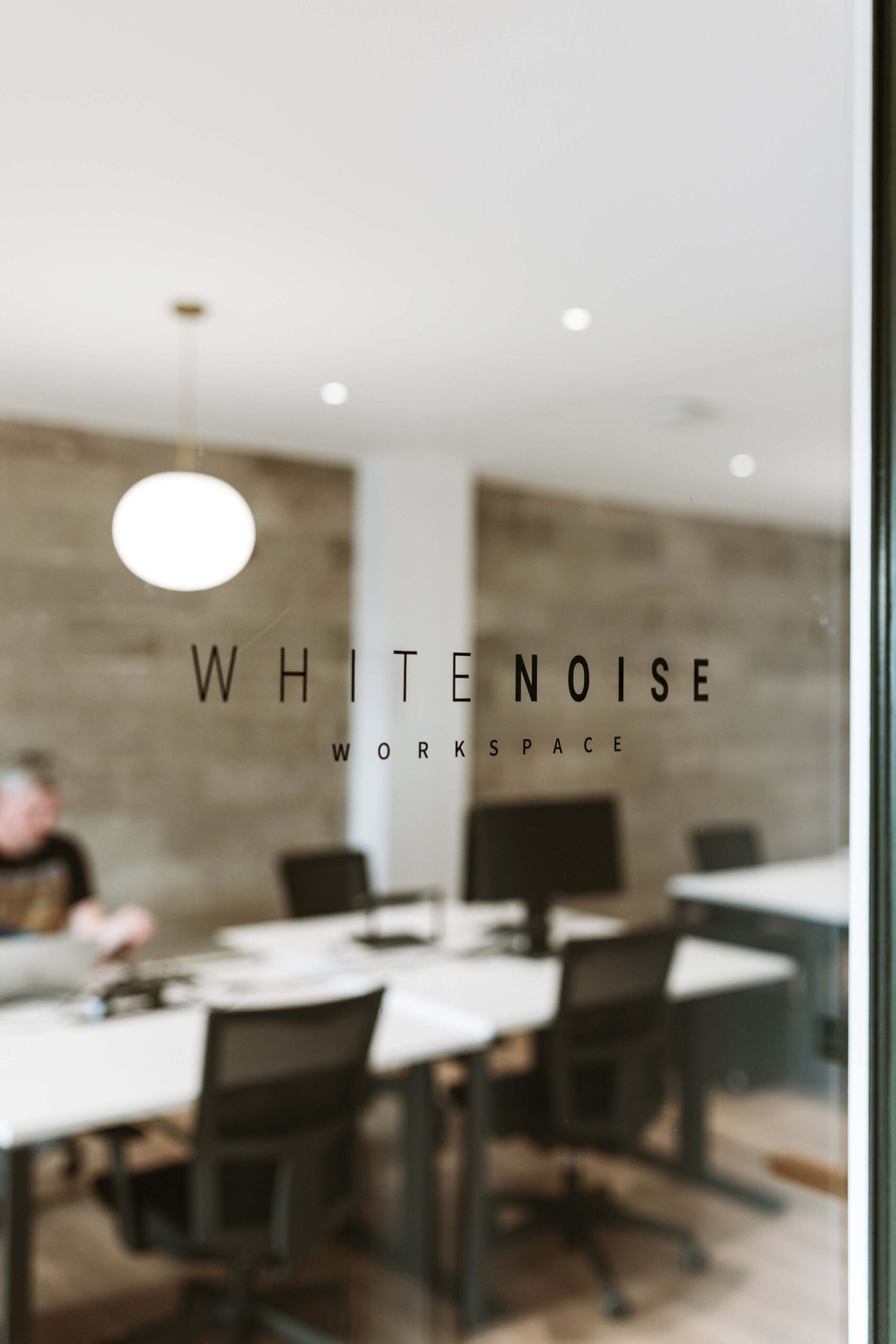
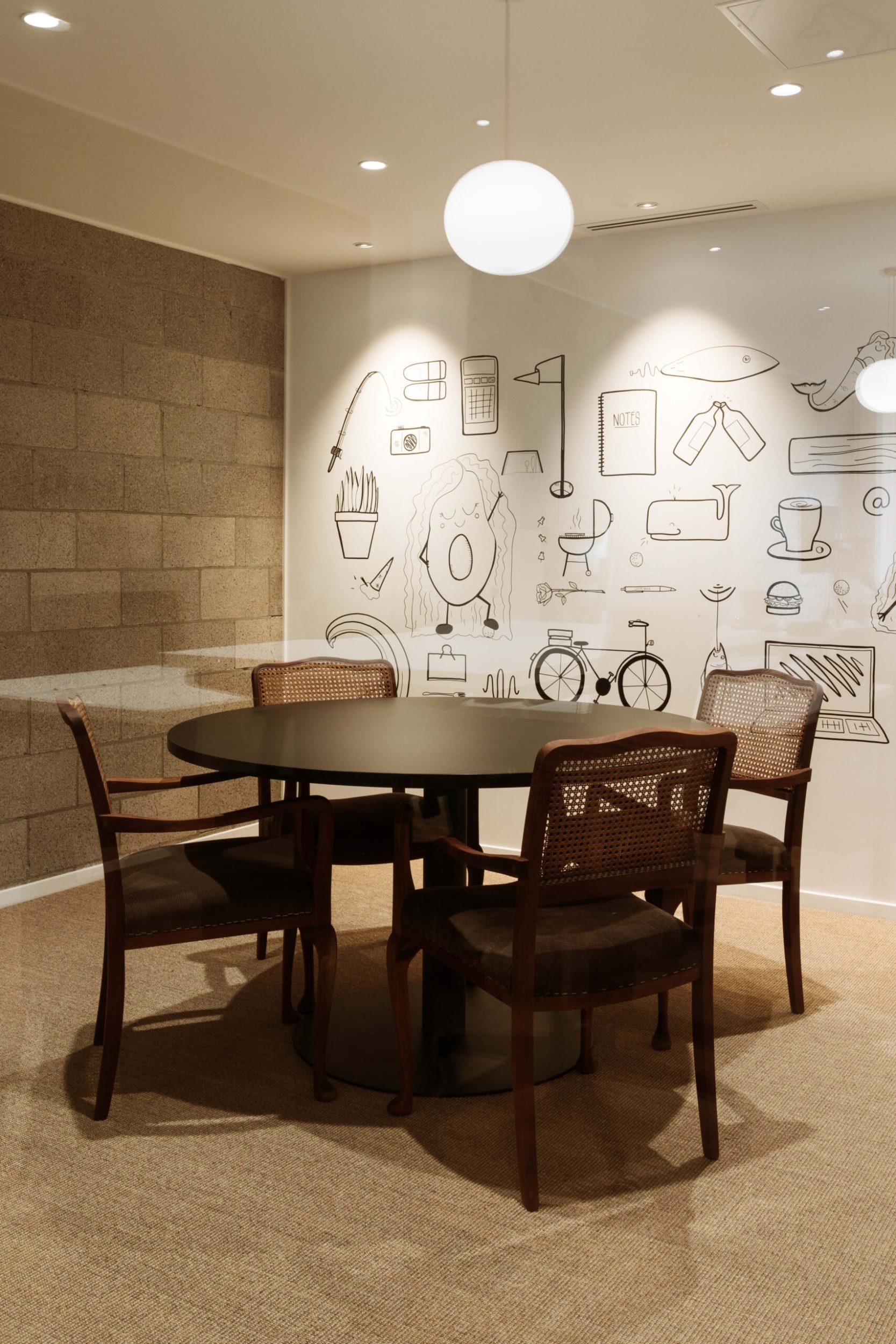
Did you have to update the dairy?
“Just the fire compliance. We didn’t realise how extensive that process was going to be – you need to work with so many different parties. I was pregnant [with Elle, who has just turned one] and helping Andrew put fire-resistant gib up. It was the state of the renovation where you’re like, ‘Oh my God, get me out of this!’”
What was your inspiration for the bathroom?
“We’ve always been inspired by travelling to different places, and we’ve always loved outdoor showers. The shower was inspired by a little shack in Thailand that we stayed in. Having a big window that looks out to the garden gives it an outdoor vibe.”
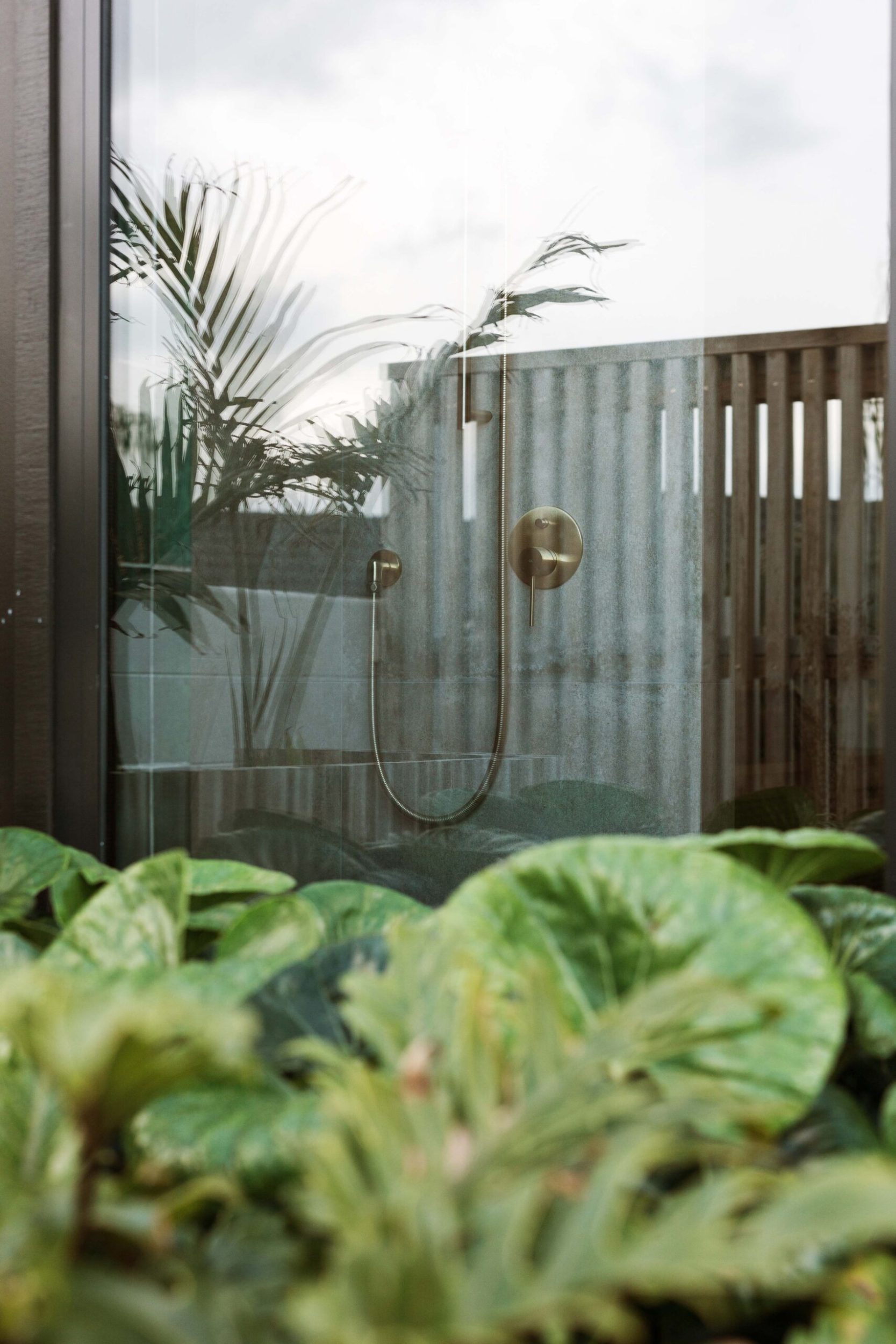
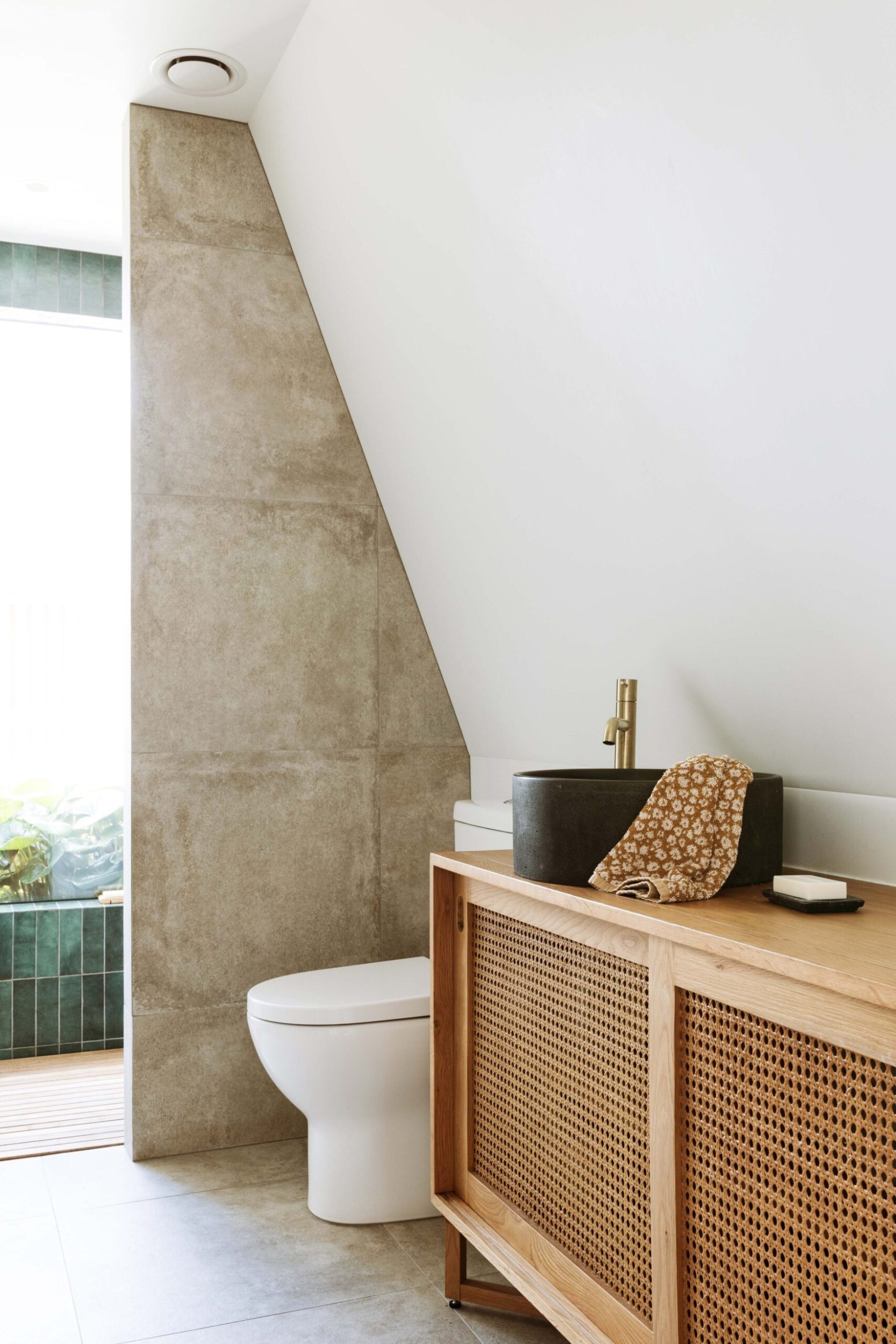
What else inspired your design?
“We stayed at Chambourcin Cottage in Hawke’s Bay on our honeymoon. It’s the most beautiful cottage. The owner had painted the walls in Resene Lemon Grass, which inspired us to use it in the bedrooms.
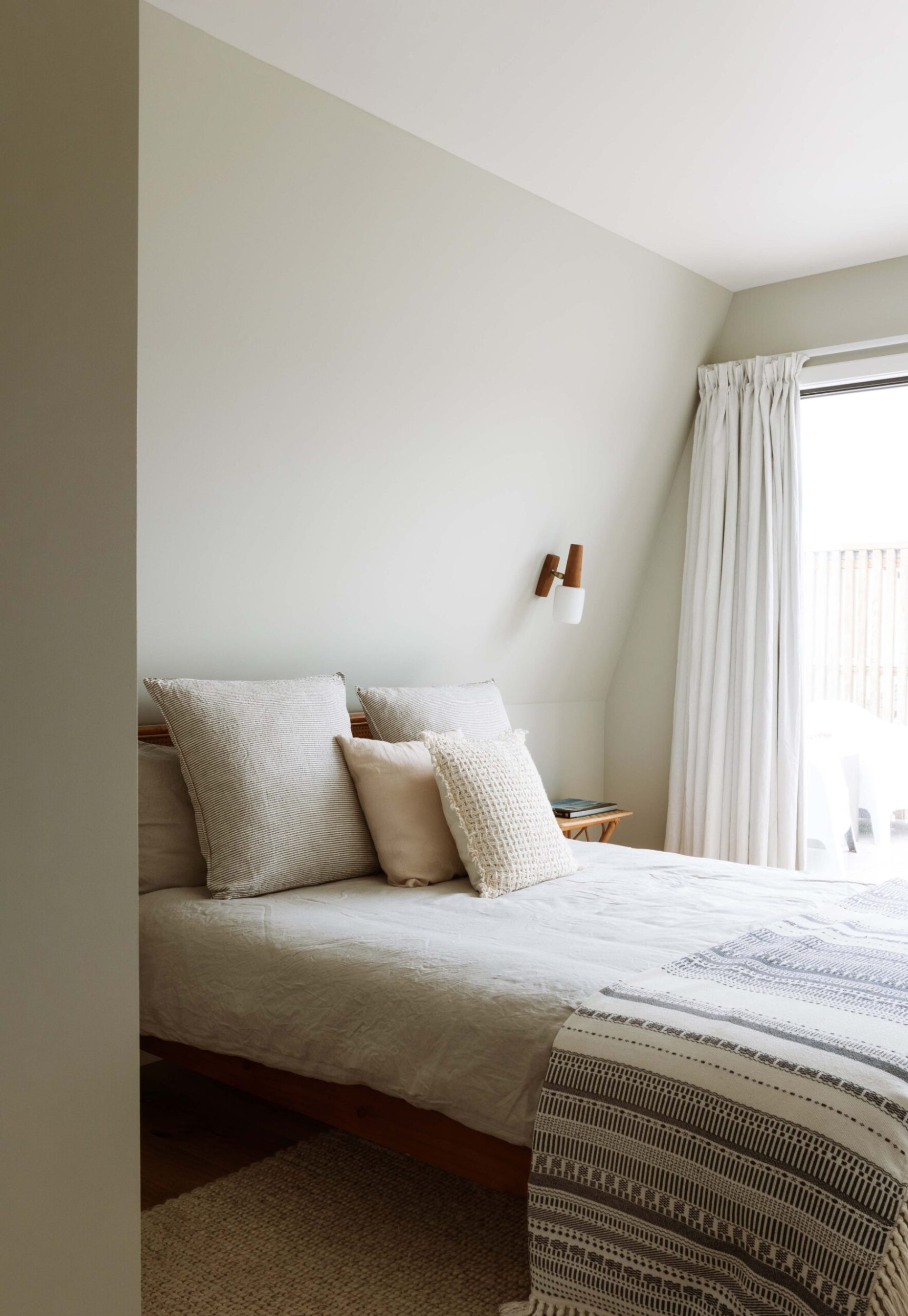
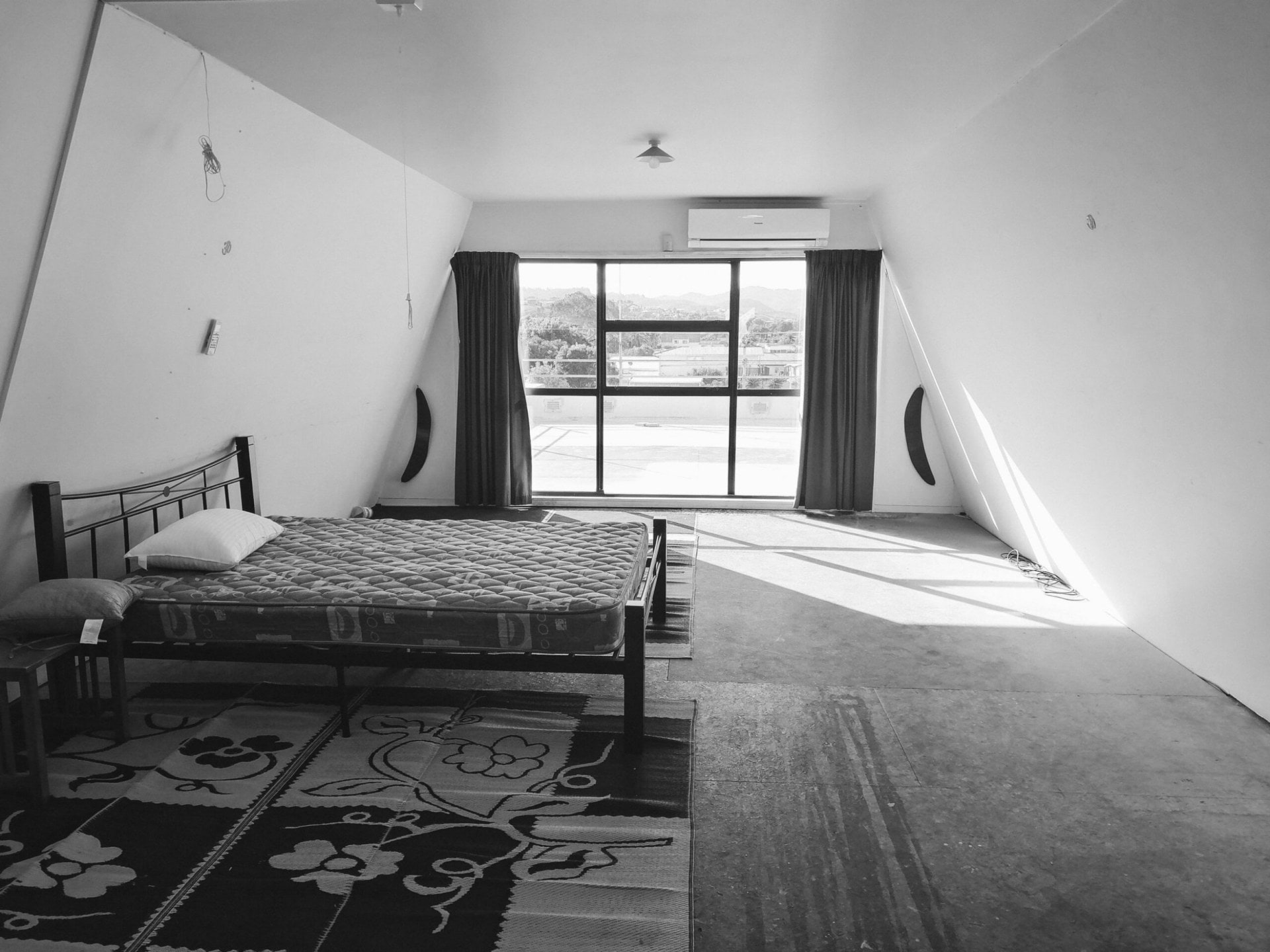
We used Resene Double Alabaster throughout the rest of the space. We wanted the exterior to be in keeping with Whangamatā and the character of the building as much as possible, so we retained the existing sloped walls but changed the fibre cement board cladding to board and batten, which is a typical Coromandel bach cladding.”
How did the mural on the side of the building come about?
“The building used to have a Harcourts billboard on it but when the lease was up, I approached a contact at Tip Top to see if they wanted to lease it, and worked with them and local artist Marcus Watson to do the mural. We thought about brands that we aligned with, and Tip Top is quite an iconic Kiwi summer brand.”
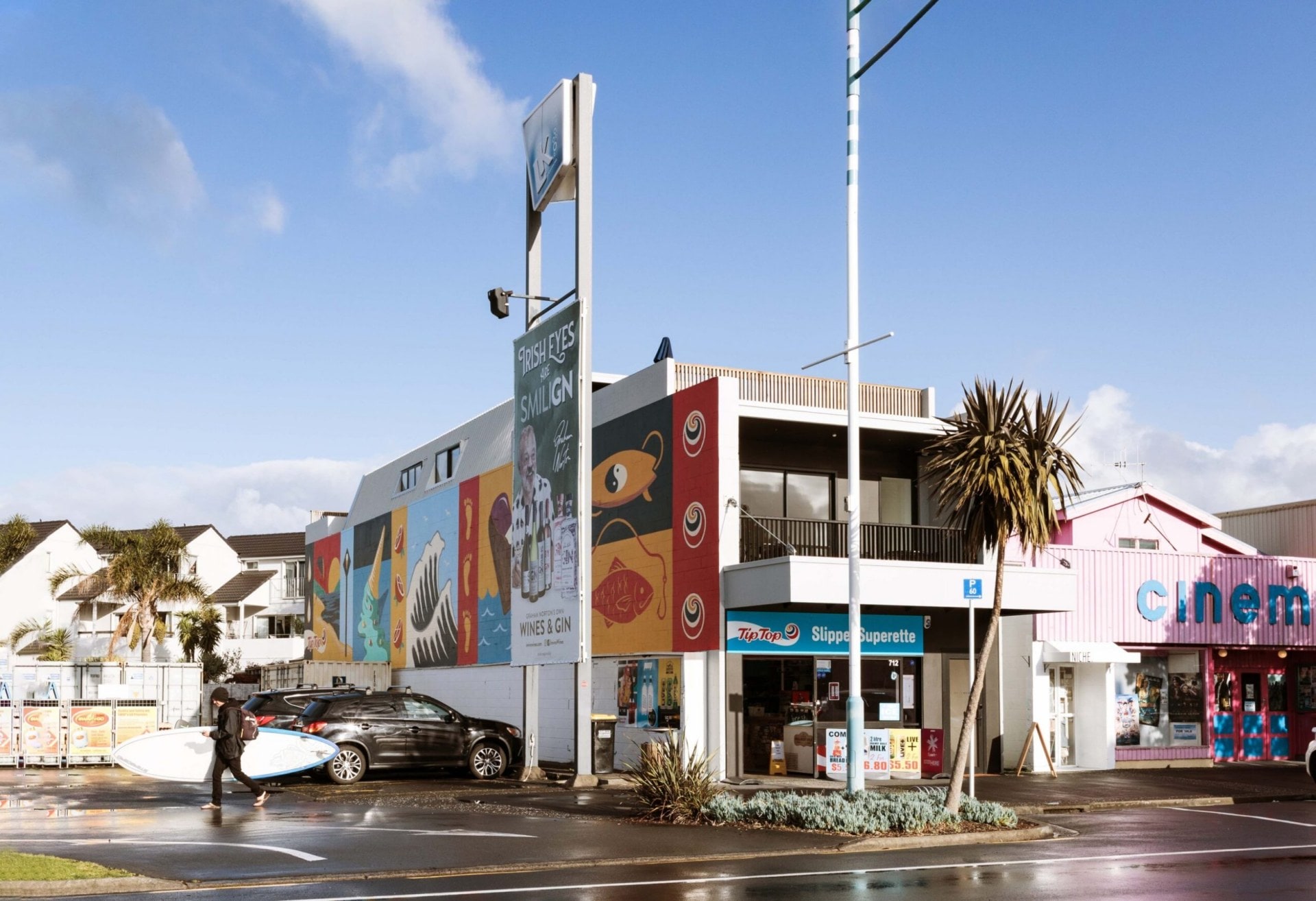
What is your favourite part of the place?
“I think the outdoor spaces are the most special thing about the building. The rooftop deck is one of the highest points on the main street. It feels surprisingly private, because you’re sunken below the block wall, which protects you from the wind, yet you can still see the surf and the mountains, but you can’t see all the rooflines unless you get up and look.”
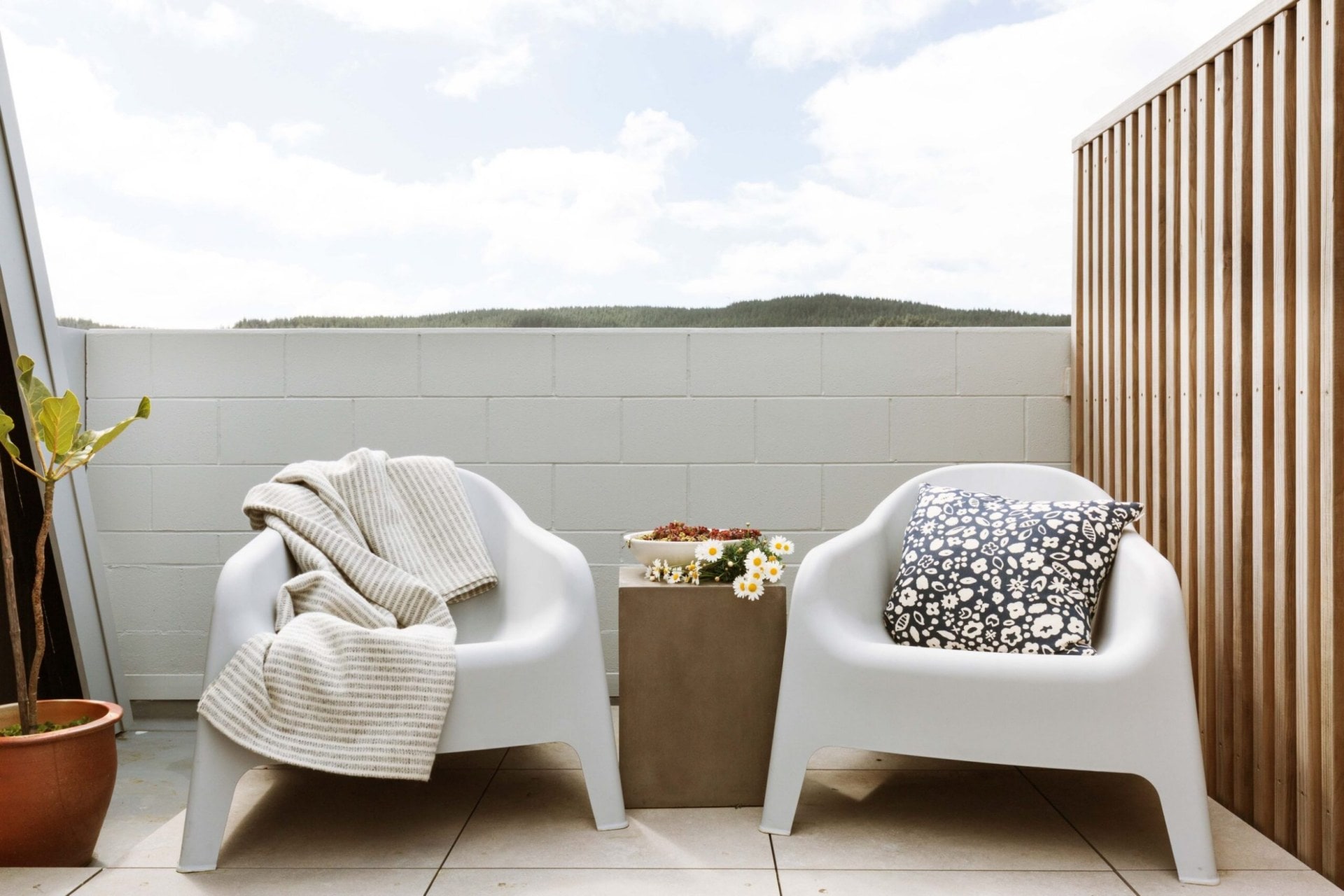
Where are you living now?
“We bought our own place a couple of months ago. Living in the apartment with a baby, with work underneath, meant we outgrew it quite quickly. We’re just starting on little jobs in our new home now. We like renovating – keeping the character of places and making them a bit more beautiful.”
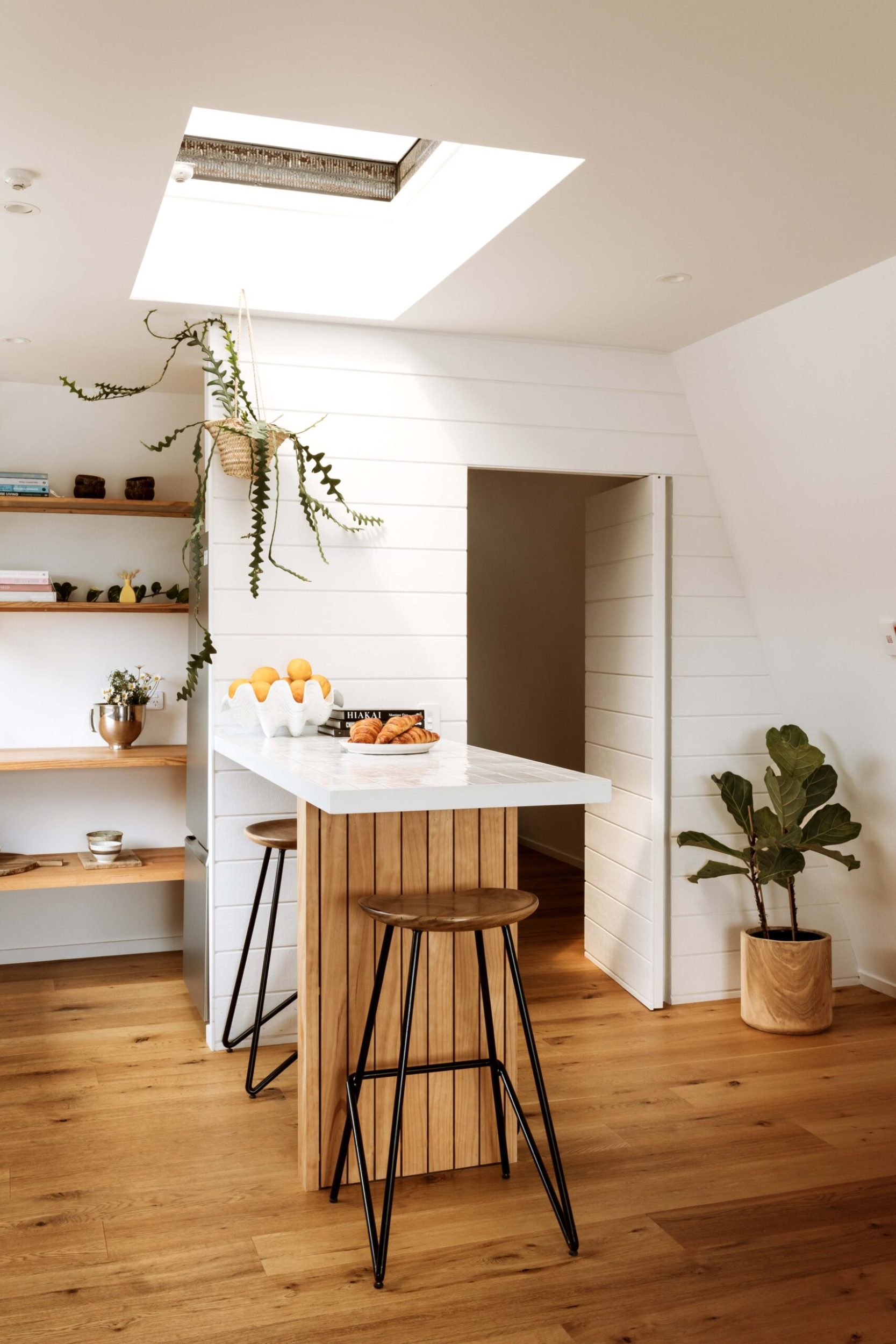
Are you proud of the result?
“Yes. When you’ve got the end result, you’re like, ‘This is so epic and so beautiful.’ And you almost forget about the hard times that you’ve gone through. I think it’s cool that we’ve created something nice on the main street from something that was derelict.”
Growing plants on balconies
- Most balconies and decks are exposed to the elements, so select plants that can cope with the unique conditions.
- For areas in full sun, choose heat lovers, such as succulents and cacti. For exposed coastal environments, go for plants that naturally grow in these conditions, such as rosemary or native grasses.
- Grouping pots creates a lusher look and also reduces transpiration, meaning your plants get less thirsty.
- Check how much weight your balcony can take before adding heavy pots of soil.
- Think vertically. Climbers such as jasmine, bougainvillea and muehlenbeckia are ideal for screening off unwelcome views.

